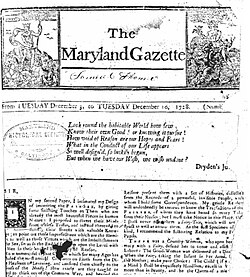
Maryland, one of the original Thirteen Colonies, has a storied past that illustrates the wider narrative of American history. From its origins as a refuge for religious minorities to its pivotal role in the American Revolution, the Civil War, and beyond, Maryland’s evolution offers a unique lens into the nation’s complexities and spirit.
Research your ancestors on MyHeritage
Early Inhabitants and European Colonization (Pre-1600s – 17th Century)Early Inhabitants and European Colonization (Pre-1600s – 17th Century)
- Pre-1600s: Native American Presence
- Various Indigenous groups, including the Piscataway, Susquehannock, and Nanticoke, inhabit the Chesapeake Bay region. Their societies are organized around fishing, farming, trade, and hunting, shaping the cultural and economic landscape long before European contact.
- 1608: John Smith’s Chesapeake Exploration
- English explorer Captain John Smith navigates the Chesapeake Bay and documents its native communities. His expeditions lay groundwork for future English settlements in the region.
- 1632: Charter of Maryland
- King Charles I grants a charter to Cecilius Calvert, the second Lord Baltimore, establishing the Province of Maryland. Designed as a haven for English Catholics facing persecution, the colony is named in honor of Queen Henrietta Maria (the wife of Charles I).
- 1634: Founding of St. Mary’s City
- Settlers aboard the ships Ark and Dove establish St. Mary’s City, the first colonial capital of Maryland. The settlement quickly becomes a model for religious toleration and economic opportunity.
- 1649: Maryland Toleration Act
- Also known as the “Act Concerning Religion,” it grants freedom of worship to all Christians. Although it does not extend to non-Christians, this act is a notable early step toward religious liberty in the English colonies.
- 1695: Annapolis Becomes Capital
- After outgrowing St. Mary’s City, the colonial government relocates to Annapolis. Annapolis evolves into a vital political, cultural, and commercial hub.
American Revolution (18th Century to early Mid-19th Century)American Revolution (18th Century to early Mid-19th Century)
- Mid-1700s: French and Indian War (1754–1763)
- Marylanders participate in the broader conflict between British and French forces over North American territory.
- The war contributes to heightened tensions with Britain, eventually leading to the American Revolution.
- 1776–1783: Revolutionary War and Statehood
- Maryland’s delegates sign the Declaration of Independence on July 4, 1776. The state supplies troops, resources, and leadership to the Patriot cause. Post-war, Maryland helps shape the new nation and adopts its first state constitution in 1776.
- 1788: Ratification of the U.S. Constitution
- Maryland becomes the seventh state to ratify the federal Constitution on April 28. This decisive action cements Maryland’s role in the formation of the United States government.
- 1812–1815: War of 1812
- Maryland faces British attacks, most notably the bombardment of Fort McHenry in 1814. The defense of Fort McHenry in Baltimore Harbor inspires Francis Scott Key to write “The Star-Spangled Banner.”
19th-Century Industrial Growth and Civil War19th-Century Industrial Growth and Civil War
- 1828: Baltimore and Ohio (B&O) Railroad Chartered
- The B&O Railroad becomes the first commercial long-distance railroad in the United States. Maryland’s position as a transportation hub grows, facilitating trade and westward expansion.
- 1861–1865: The Civil War Era
- Though a slave state, Maryland remains in the Union under federal military pressure. The state’s strategic location near Washington, D.C., makes it a crucial border state during the conflict. Emancipation comes to Maryland in 1864 via a new state constitution, abolishing slavery before the 13th Amendment is ratified.
20th-Century Development and Social Change20th-Century Development and Social Change
- 1904: Great Baltimore Fire
- A catastrophic blaze engulfs much of downtown Baltimore for over 30 hours, destroying more than 1,500 buildings. Reconstruction leads to modernized infrastructure and stricter building codes, shaping Baltimore’s future growth.
- Mid-20th Century: Civil Rights and Social Change
- Baltimore’s Thurgood Marshall, born in 1908, becomes the first African American Supreme Court Justice in 1967. Maryland grapples with desegregation in schools and public facilities, reflecting national civil rights struggles.
- Late 20th Century: Economic and Cultural Expansion
- Growth of high-tech industries around the Baltimore–Washington corridor. Urban revitalization efforts, particularly in Baltimore’s Inner Harbor, revamp Maryland’s public image and boost tourism.
- 21st Century: Social, Economic, and Political Shifts
- Maryland continues to be a leader in biotechnology, cybersecurity, and higher education. In 2015, widespread protests occur in Baltimore following the death of Freddie Gray, prompting national discussions on policing and racial justice. Environmental restoration efforts focus on the Chesapeake Bay, reflecting Maryland’s longstanding ties to the region’s maritime heritage.

